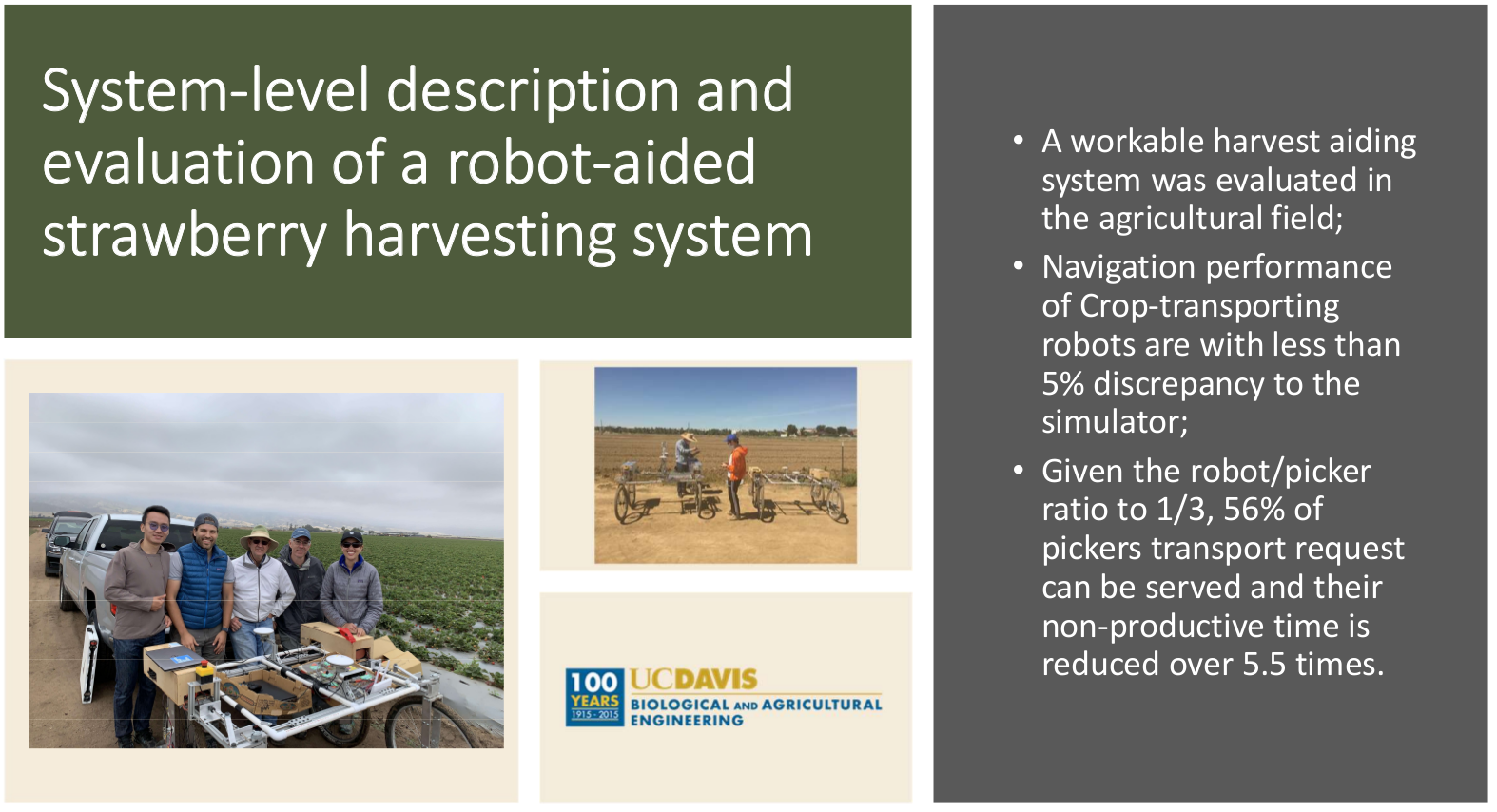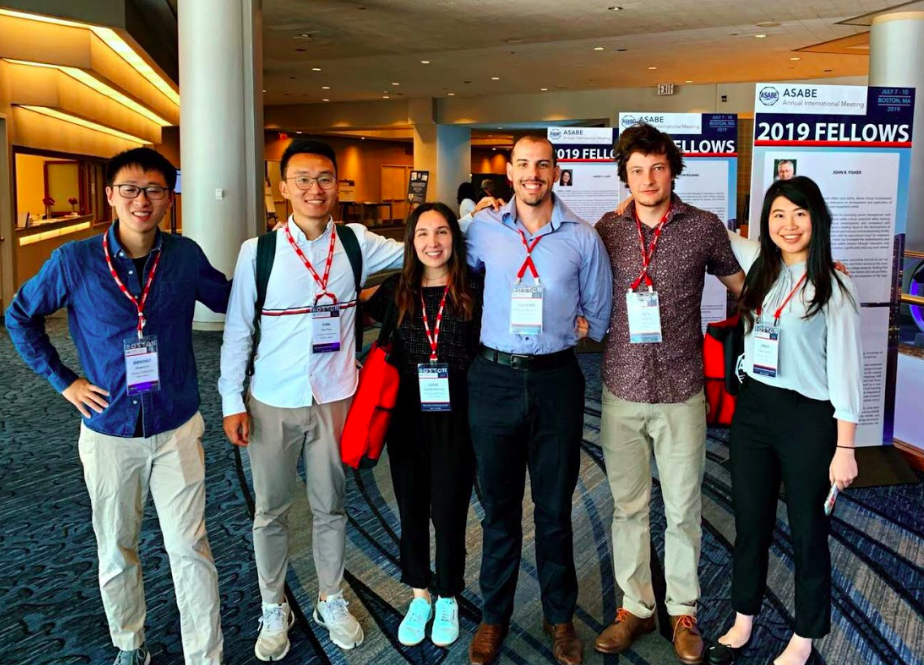July 16, 2021
Talk, ASABE conference 2021, Online
As an agricultural robot navigates in an orchard following a nominal path consisting of waypoints, it may encounter unknown static or dynamic obstacles. When that happens, the robot must generate in real-time feasible trajectories to avoid the obstacles with minimum deviation from the nominal path. In this work, we address operating scenarios where the robot follows coarse routing waypoints obtained from a task-level planner. Also, we assume that the robot has adequate sensing to detect obstacles, and accurate localization capability, and must replan its path online, as new static or dynamic obstacles are sensed. Under the above conditions, a semi-reactive trajectory generation method that operates in a Frenet-Serret Frame is adapted to compute a set of smooth trajectories that can be followed by the robot, given the estimated robot state, sensed obstacles, and vehicle nonholonomic constraints. Then, the algorithm eliminates the trajectories that will interfere with the sensed obstacles and those that would result in violation of the maximum turning curvature, speed, and acceleration of the robot. If there are no remaining trajectories in the set, the robot will wait at the current location until a feasible path is achieved, after the obstacles are cleared. Otherwise, the planner will select an optimal plan that minimizes a weighted sum of the trajectory’s jerk and deviation from the nominal path, over the entire trajectory, as well as the assigned traversal speed of the last point in the trajectory. Finally, an existing model-based path tracker is implemented to follow the selected trajectory. As a first step, we implemented the navigation module with the proposed methodology in a simulated vineyard, with small-sized obstacles (that provide space for the robot to pass between them and the crop row) randomly distributed inside rows and headlands. The simulation results indicate that the robot can maneuver successfully and avoid the obstacles while executing a pre-assigned route. The navigation module was also developed into a ROS package. The functionalities of obstacle sensing, trajectory planning, and path tracking will be integrated and implemented on an existing custom-built robot platform to evaluate the navigation performance during a vineyard scouting task. In the evaluation experiments, static obstacles will be placed near the way points of the test path. Also, people will walk near the nominal path to evaluate the system in the presence of dynamic obstacles.



